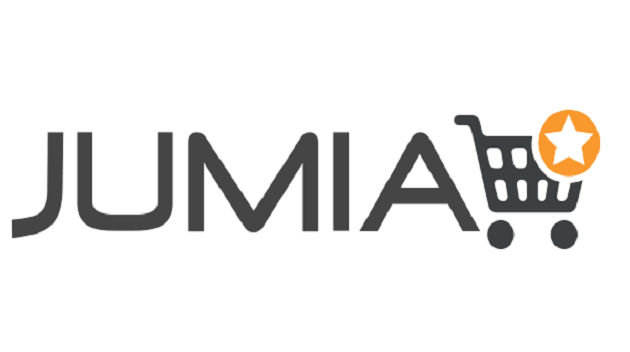E-Business
Oracle Announces New Innovations in Cloud Platform for Digital Business

Thomas Kurian, executive vice president of Product Development at Oracle on Tuesday at Oracle OpenWorld 2014, outlined new innovations in Oracle Fusion Middleware.
With these enhancements, customers and partners can leverage the world’s leading cloud platform to power innovation and drive a digital business advantage throughout their organizations.
New features run the gambit of the Oracle Fusion Middleware portfolio, including new social, mobile, security, integration, and collaboration technologies.
Kurian highlighted major updates across the entire Oracle Fusion Middleware stack, including new platform-as-a-service (PaaS) and on-premises cloud offerings as well as mobile, security, content management, and data management and integration capabilities.
With these innovations, customers and partners can implement new digital business models and reduce costs by leveraging elastic private and public cloud architectures.
In addition to on-stage demos of the new offerings, Kurian highlighted the momentous customer adoption of Oracle Fusion Middleware.
Kurian was joined on stage by Steve Holland, CTO/CDO of 7-Eleven, who shared his company’s Oracle Fusion Middleware success story.
Cloud: Oracle’s public and private cloud infrastructure-as-a-service (IaaS) and platform-as-a-service(PaaS) offerings provide a complete, integrated, best-in-class and standards-based platform to lower integration costs, provide self-service capabilities to drive productivity, and deliver seamless workload portability between on-premises and cloud-based applications.
Further enabling customers and partners to leverage the power of the cloud, Oracle announced six new Oracle Cloud services—Oracle Big Data Cloud Service, Oracle Mobile Cloud Service, Oracle Integration Cloud Service, Oracle Process Cloud Service, Oracle Node Cloud Service, and Oracle Java SE Cloud Service.
These new services join the following Oracle Cloud platform services from the Oracle Fusion Middleware portfolio: Oracle Java Cloud Service, Oracle Messaging Cloud Service, Oracle Developer Cloud Service, Oracle Documents Cloud Service, and Oracle Business Intelligence Cloud Service.
Oracle mobile platform: Oracle Mobile Application Framework supports rapid mobile application development across multiple devices, and Oracle Mobile Security Suite provides mobile security for BYOD and shared devices, bringing together identity and access management.
To simplify secure mobile application development, Oracle deepened the integration between the two offerings, making it easier for developers to create rich mobile user experiences without compromising security.
The addition of Oracle Mobile Cloud Service also simplifies access to enterprise mobile services in the cloud, and the new Oracle Mobile Application Framework Composer allows users to accelerate and simplify the development of mobile applications by offering a visual and declarative way of delivering mobile applications.
Service integration: With the new Oracle Integration Cloud Service, Oracle Cloud Adapters, and Oracle Cloud Adapter Software Development Kit (SDK), organizations can simplify the integration of on-premises systems with customized and packaged cloud applications.
Customers can also support multichannel delivery of applications and services across mobile, Web, B2B, and cloud applications through new API management capabilities, REST, and JSON adapters.
Oracle provides complete API lifecycle management, including definition, creation, publishing, security, monitoring, and management of APIs and seamlessly integrates with private, public, and hybrid cloud solutions.
Business process management (BPM): The recently released Oracle Business Process Management Suite 12c is a comprehensive BPM platform that delivers business-driven process design and advanced process analytics.
The new Oracle Process Cloud Service supports process innovation and optimization through process monitoring and analytics; process automation capabilities including workflow, events, and rules; and mobile forms and workspace capabilities.
Data integration and business analytics: Recent data integration and business analytics offerings from Oracle provide a unified platform to speed analysis to insights and data movement across relational databases, operational systems, data warehouses, and Hadoop clusters.
Oracle Analytics Cloud is a comprehensive portfolio of analytics offerings built for the cloud, deployed in the cloud, and enabling data analysis for cloud, on-premises, traditional, and big data sources.
A new version of Oracle Enterprise Metadata Management covers the full breadth of metadata management and data governance needs in an organization, including data lifecycle management and harvest, and integrates third-party metadata, data governance, stewardship, and standardization.
Content and collaboration: Additional innovations enable collaboration in the context of business applications and integrate content management, collaboration, and process management into an agile platform for any department.
The new Oracle Documents Cloud Service provides document sharing securely across devices and with others using secure workspaces.
Oracle Social Network Cloud Service provides an enterprise social platform to facilitate collaboration within and across organizations.
Identity management: New identity management capabilities unify access management, identity management, and governance in a unified identity platform across on-premises systems and cloud for desktop, Web, and mobile applications.
The offering also enables interoperability across heterogeneous cloud services with modern security standards and protocols.
Oracle Cloud Application Foundation: Oracle Cloud Application Foundation, including Oracle WebLogic Server 12c Release 1 (12.1.3) and Oracle Coherence 12c Release 1 (12.1.3), aligns with the release of Oracle Java Cloud Service.
This is a significant release of Oracle’s core Java server infrastructure; in addition to major capabilities expanded for modern application development, it brings to fruition a key value proposition that enables Oracle customers to run their standards-based Java workloads in a private cloud or on-premises, on conventional hardware, or optimized for engineered infrastructure with Oracle Exalogic Elastic Cloud and Oracle SuperCluster systems—all without change in the Oracle Cloud.
No other modern Java application infrastructure can provide this, Oracle said.
“As a very large multi-location retailer that runs 24x7x365, we demanded a better and safer way to connect with our external guests and deliver new innovations to market place faster and easier. With our Oracle Fusion Middleware technologies we are now able to provision new environments in less than a day. This includes the complete Oracle SOA Suite on Oracle Exalogic, with Oracle Enterprise Manager managing the Oracle SOA Suite, Oracle Exalogic, and our Oracle Exadata databases,” said Steve Holland, CTO and CDO, 7-Eleven, Inc.
“With the data explosion, globalization, and the rise of social and mobile technologies, our customers are facing more challenges than ever before,” said Thomas Kurian, executive vice president, product development, Oracle. “Oracle is committed to delivering the technologies needed to help our customers turn those challenges into opportunities and to creating a modern, secure cloud infrastructure that can simplify IT, deliver a digital business advantage, and make it easier for organizations to deliver better customer experiences.”
E-Business
GenAI Adoption Among African workers Outpace Global Peers

Africa’s workforce is embracing artificial intelligence (AI) at a faster pace than global peers, but pressure is mounting for organisations to ramp up digital skills development as generative AI (GenAI) begins reshaping roles across industries.

This is according to PwC’s Global Workforce Hopes and Fears Survey 2025, which shows a continent ready for AI-enabled transformation, but facing a narrowing window to prepare, through skills development initiatives.
The survey, covering nearly 50 000 workers worldwide and 1 753 across South Africa, Algeria, Kenya, Morocco and Nigeria, finds that African employees are already integrating AI into daily operations.
Sixty-four percent of respondents in Africa used AI tools in the past year, compared to 54% globally, and the sentiment is overwhelmingly positive. While only 17% report using GenAI every day, confidence in its benefits is high: 76% believe GenAI improves work quality, and 72% expect AI-driven productivity gains within three years.
In SA, executives are even more bullish, as 91% say AI has already lifted both productivity and work quality — a signal that leadership is pushing harder toward AI-enabled ways of working, notes the survey.
However, this optimism is coupled with rising concern about future readiness. Only 35% of African workers believe their skills will still be relevant three years from now. With GenAI expected to affect nearly half of all job roles, PwC warns that the continent’s workforce risks falling behind unless organisations accelerate large-scale reskilling.
Despite the pressures, employees are not standing still. PwC notes that African workers outperform their global peers in proactive learning, recording 15% higher participation in skills-building and receiving 6% more support from managers. This indicates that both workers and immediate supervisors recognise the pace of AI adoption and are pushing to adapt.
PwC Africa people and organisation leader, Dr Dayalan Govender, says the moment calls for decisive leadership. Organisations, he argues, must integrate AI into workforce strategies, accelerate digital adoption, and expand upskilling programmes at scale.
“Africa’s workforce is optimistic and ready for change, but leaders must accelerate digital adoption and invest in future-ready skills to convert this optimism into sustainable growth,” he says.
Beyond the technology shift, the survey captures a workforce hungry for growth but constrained by financial pressure. Many employees are preparing to make career moves: 45% plan to request a raise, and another 45% aim for a promotion in the next year. Yet household financial stability remains strained, with only a third of respondents reporting any money left over for savings.
Still, Africa’s workplaces continue to show strong foundations of trust and purpose — elements PwC believes will be critical in navigating GenAI disruption. More than 55% of workers trust management, and two-thirds say their work feels meaningful, both above global averages.
With AI adoption rising and employees motivated to reinvent their careers, PwC warns that the coming years will determine whether Africa’s early optimism translates into long-term competitiveness as GenAI transforms the world of work.
The report calls for embedding AI into workforce strategies to bridge the gap between optimism and practical adoption, scaling upskilling initiatives to prepare for GenAI disruption, and fostering trust and psychological safety to retain talent and drive innovation.
“For employers, these findings are a stark reminder that they can and should do more to help workers understand, adopt, and embrace AI’s transformative power.
“Employers may need to pay special attention to entry-level workers, nearly a third of whom say they’re worried to a large or very large extent about AI’s impact on their future, even as they’re also curious (47%) and optimistic (38%) about its long-term societal effects,” notes the report.
E-Business
Nigeria Records Highest Weekly Cyberattacks in Africa — Report

Nigerian organisations are facing the highest volume of weekly cyberattacks in Africa, according to the newly released African Perspectives on Cyber Security Report 2025 by Check Point Software Technologies Ltd., a global leader in cybersecurity solutions.

The report revealed that Nigerian firms experience an average of 4,200 attacks per week, significantly higher than the continental average of 3,153 and 60 per cent above the global average of 1,963 attacks per organisation.
The findings highlight a sharp rise in attacks across Africa, driven largely by artificial intelligence-enabled threats.
Kingsley Oseghale, country manager for West Africa at Check Point, said attackers are increasingly using AI to automate phishing, impersonation, and cloud exploitation.
“AI has become part of the attack surface,” Oseghale said. “Attackers are using it to automate phishing and identity theft at scale. The only effective response is prevention-first security that combines visibility, governance, and AI protection.”
The report noted that cybercriminals are exploiting exposed identities and misconfigured systems to target critical sectors, including finance, energy, telecoms, and government.
Identity-led intrusions, AI-generated phishing campaigns, and multi-vector ransomware are on the rise.
Across the continent, Check Point identified key trends in different markets. Nigeria is experiencing business email compromise and cloud exploitation; South Africa faces rising ransomware, smishing, and botnet infections such as Vo1d and XorDDoS; Kenya has seen ransomware targeting critical energy infrastructure; and Morocco has experienced coordinated government and education-sector disruptions via DDoS and website defacement attacks.
The report highlights five major shifts shaping Africa’s cyber risk in 2025.
Traditional ransomware has evolved into data-leak extortion, AI-generated deception is widespread, and identity has emerged as the new security perimeter.
Weak cybersecurity, the report warned, can now affect international market access under regulations such as the EU’s NIS2 Directive, making digital resilience an economic necessity.
The study urged African businesses and governments to adopt prevention-first security strategies, including continuous risk assessment, regulatory readiness, and public-private collaboration.
Oseghale emphasised that, as AI reshapes operations, cybersecurity must shift from reaction to prediction.
“The real challenge is not adopting new technology but securing the trust that underpins it,” he said.
E-Business
Jumia’s Data Shows Nigerians Turning to Digital Retail to Navigate Inflation Pressures

As Black Friday 2025 unfolds across Nigeria, new insights from Jumia’s Q3 2025 financial results reveal that more Nigerians are relying on digital retail to navigate inflation and rising living costs.

The data points to a more deliberate, value-driven shopper, one using online platforms to stretch budgets, compare options quickly, and extract more value from each purchase.
Jumia reported a 30 percent year-on-year increase in physical goods orders, while Gross Merchandise Value for physical goods rose by 43 percent.
This stronger GMV growth highlights a clear behavioural shift: consumers are assembling higher-value baskets by combining essentials with premium or long-term household items. Online retail is serving as a tool for strategic planning, not just convenience.
According to Temidayo Ojo, Chief Executive Officer of Jumia Nigeria, Black Friday now plays a more critical economic role. “Households are using digital retail to defend purchasing power. They plan their lists, compare prices instantly, and rely on the reliability and convenience that e-commerce offers,” he said.
This year’s Black Friday trends show growing demand in categories that directly support daily living. Household essentials and FMCG products are seeing significant uptake as families stock up during price drops. Home and kitchen equipment is also experiencing stronger demand as shoppers prioritise practical, durable tools. Affordable fashion and beauty products are gaining momentum as discounts make them more accessible.
Consumer behaviour in the lead-up to the sales period further reinforces this shift. Jumia recorded a notable increase in “Add to Wishlist” and “Add to Cart” activity, signalling more planning and fewer impulse purchases. The gap between GMV and order growth indicates that customers are optimising baskets using bundles, vouchers, and promo combinations, behaviours uniquely suited to digital platforms.
With inflation intensifying the need for smarter buying, trust markers on Jumia, such as verified sellers, official brand stores, ratings, and clear return policies, are becoming more central to decision-making. Authenticity and durability now outweigh the appeal of the lowest price.
Jumia’s logistics footprint is making these benefits available nationwide. Its 30,000 sqm Isolo fulfilment centre, 480 pickup stations, and 62 logistics partners ensure that customers in secondary and peri-urban cities enjoy the same deals as those in major hubs, reducing travel burdens and adding financial value.
Overall, Jumia’s Q3 data and Black Friday trends show that Nigerians are turning to digital retail as a practical, strategic response to inflation, using e-commerce to manage budgets, preserve purchasing power, and make more informed buying decisions.

 E-Business2 days ago
E-Business2 days agoJumia’s Data Shows Nigerians Turning to Digital Retail to Navigate Inflation Pressures

 E-Business2 days ago
E-Business2 days agoNigeria Records Highest Weekly Cyberattacks in Africa — Report

 Telecom2 days ago
Telecom2 days agoAirtel Nigeria Wins Best in Technology for Development @ 2025 SERAS Awards

 News2 days ago
News2 days agoSEC to Enhance Investor Engagement with USSD Code, ISS Audio

 Telecom2 days ago
Telecom2 days agoNigeria-South Africa Chamber Celebrates Silver Jubilee of Bilateral Trade Ties

 News2 days ago
News2 days agoFirm Detected Half a Million Malicious Files Daily in 2025

 News2 days ago
News2 days agoNEC Endorses N100Bn Overhaul of Police and Security Training Facilities

 Broadcasting1 day ago
Broadcasting1 day agoIt is Official, DStv Confirms Termination of 16 Major Channels















